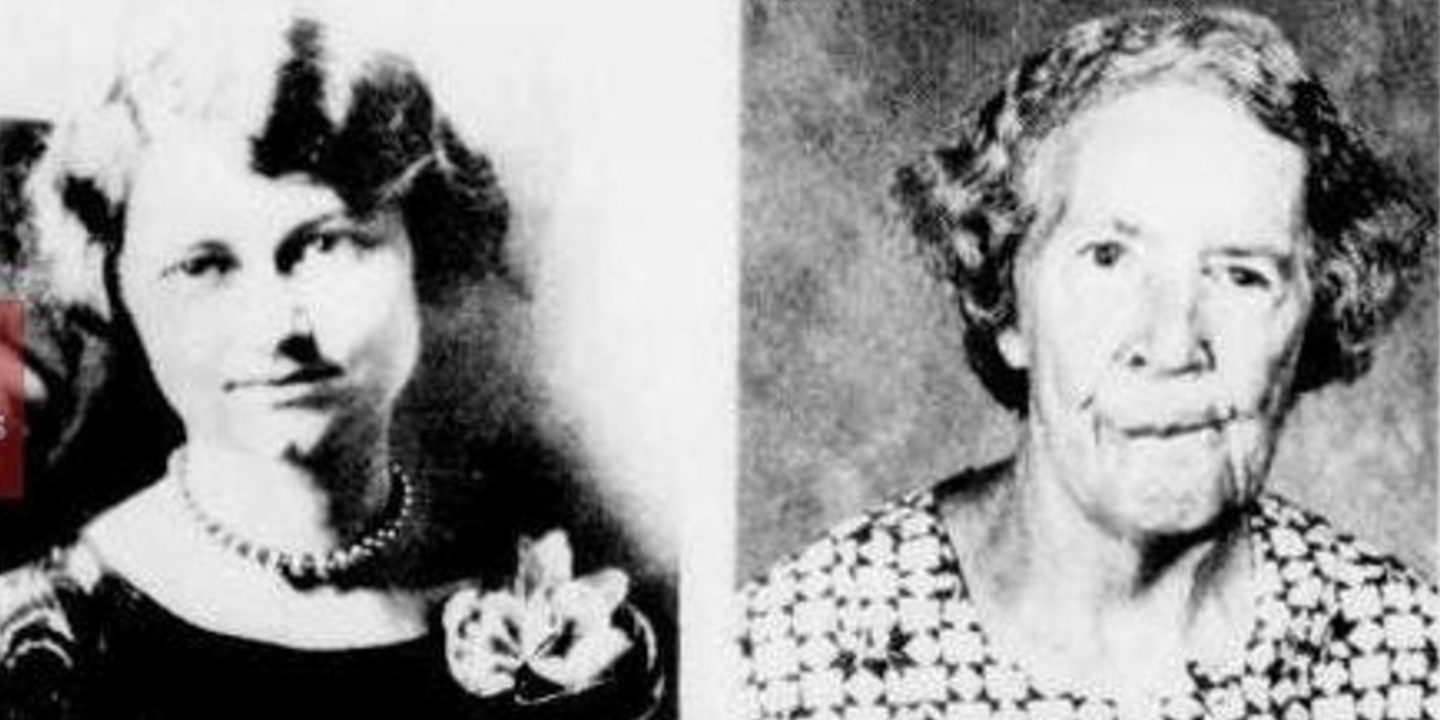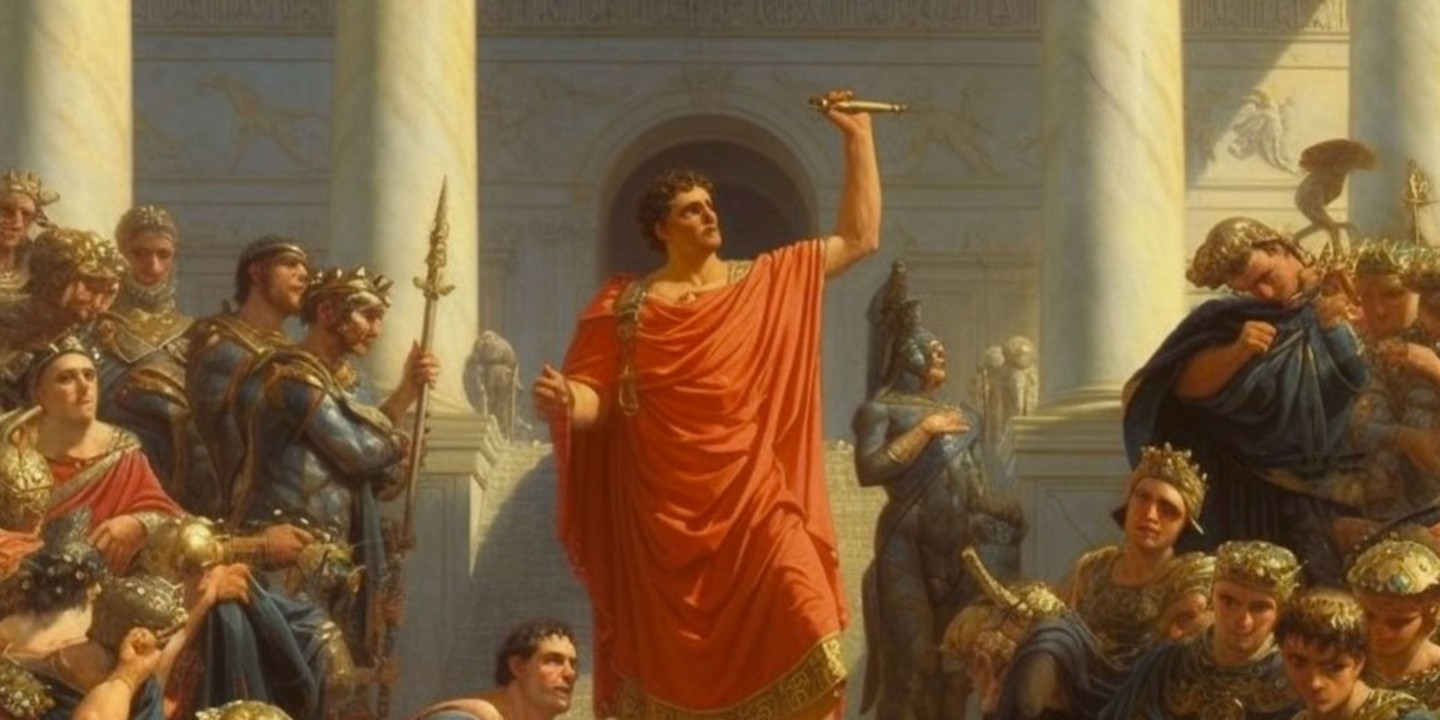20 Weird and Chaotic Historical Figures That Defied All Logic
History is Weird
History is full of so many colorful figures, from wise philosophers to brilliant tacticians. Then there are the weirdos. Some of them were super successful, others just minded their own business and lived quiet lives. Nonetheless, they’re remembered for defying the odds, embracing their chaoticness, and being cool enough to talk about centuries later.
 Roger Higgins, World Telegram staff photographer on Wikimedia
Roger Higgins, World Telegram staff photographer on Wikimedia
1. Connecticut Leatherman
The Connecticut Leatherman was a vagabond who lived from 1839 to 1889 and traveled around the northeastern United States. He was best known for his handmade leather clothes and was a bit strange. His English was broken, and he was a bit grumpy, but eventually people began growing fond of him, as if they were fascinated. He lived in rock shelters known as Leatherman caves and would stop by in towns to pick up supplies and carry on.
2. Lord Byron
Lord Byron was an extravagant English poet best known for writing Don Juan and Childe Harold. But his work aside, his personal life was scandalous. He would keep a pet bear, was always in and out of relationships, and is the inspiration for the Byronic hero archetype, which essentially refers to brooding and hot.
3. Caligula
Known formally as Gaius Caesar Augustus Germanicus, or more easily, Caligula, this emperor lived from 12 to 41 CE and was notorious for his erratic behavior. For example, he made his horse a senator. Then he did more comparatively normal things for the time, like insisting he be worshipped as a god.
4. Tycho Brahe
Tycho Brahe was a Danish astronomer who lived from 1546 to 1601 and by all accounts was your usual run-of-the-mill genius. Well, with some intricacies, that is. For instance, he had a pet moose, hired a dwarf medium, and after he lost his nose in a battle, he replaced it with a brass prosthetic.
5. Diogenes
Greek history is full of interesting philosophers and thinkers, but Diogenes stands out as the founder of cynicism. He lived in poverty, would walk around with a lantern in the morning, and claimed he was just looking to find at least one honest person in the world. He was a man without fear and shame, and eagerly challenged powerful figures at the time.
6. Jeanne de Clisson
Jeanne de Clisson was a noblewoman who decided a pirate life was in fact for her. She lived from 1300 to 1359 and started a pirate campaign against the French king, who captured her husband for treason. She even named her ship after revenge, insinuating just how scorned she felt, and how far she was willing to take things.
 Louis Jean Désiré Delaistre / After Charles Abraham Chasselat on Wikimedia
Louis Jean Désiré Delaistre / After Charles Abraham Chasselat on Wikimedia
7. Zheng Yi Sao
Zheng Yi Sao was born in 1775 in South China and lived a pretty normal life until she married a pirate named Zheng Yi. After his passing in 1807, she decided to take control of his consortium and became the unofficial commander of a massive fleet with over 40,000 to 60,000 pirates. She was one of history’s most successful pirates.
 AnonymousUnknown author on Wikimedia
AnonymousUnknown author on Wikimedia
8. Grigori Rasputin
If you’ve heard the iconic song, you probably have a few ideas about how Rasputin was. He was a mystical advisor to the Russian Romanov family and impressed the family by treating their son’s illness with prayer and hypnosis. He was also quite promiscuous, and the claim that he had supernatural powers just added to his appeal.
 Unknown authorUnknown author on Wikimedia
Unknown authorUnknown author on Wikimedia
9. James VI of Scotland
James VI was a Scottish king who was technically next in line and ended up unifying the English and Scottish crowns. Then the eccentricness began. He was fascinated by magic, so much so that he wrote documents called Daemonologies to aid in identifying witches. He also preferred male company and kept numerous beautiful men in his court.
10. Captain Sir Richard Francis Burton
When it comes to adventuring, it’s hard to compete with Sir Richard Francis Burton. He was fluent in almost 30 languages, and during his adventures, he would get up close and personal with locals. He had a very inquisitive mind but would also go too far. For instance, he once pretended to be a Muslim pilgrim to sneak into Mecca. He also took the time to translate the Kama Sutra into English.
 Frederic Leighton on Wikimedia
Frederic Leighton on Wikimedia
11. Justinian II
Justinian II was the last Byzantine emperor of the Heraclian dynasty. He was passionate and eager to restore Rome to its former glory. However, he wasn’t very popular, and his subjects rebelled against him under the leadership of Leontius. His nose was actually removed during this, and he was cast out into exile. That should have been the end, but he ended up returning, with the addition of a golden nasal prosthetic, and actually claimed the throne once more, granting him a second reign.
12. Aleister Crowley
Aleister Crowley was a prolific occultist and magician who contributed heavily to satanic panic. His church was called Thelema, which he described as being about finding one’s purpose. Instead, the churchgoers would participate in peculiar rituals and experiments, leading to all sorts of scandals.
13. John Murray Spear
This man was quite a character, and compiling all the wild things he did would take more than a paragraph. Nonetheless, his journey began when he believed he had to create a human-like machine. He then tried to bring people back from the beyond, all the while working on his mechanical messiah that was meant to save the world.
14. Salvador Dali
Salvador Dali just has that look of bizarre eccentricism, and he lives up to it. He was an artistic genius, drawing famous pieces like those with the drooping clocks. In his free time, he enjoyed perfectly normal hobbies like taking care of his pet anteater, who actually was his reincarnated brother, according to Dali.
 Van Vechten, Carl, 1880-1964. on Wikimedia
Van Vechten, Carl, 1880-1964. on Wikimedia
15. Götz of the Iron Hand
Götz was a German knight, but he’s better known for his rebellious work as a mercenary leader. In one battle, he even ended up losing his right hand, so he decided to make a mechanical iron prosthetic. He was also quite a character, and was known for his clever insults, which were even included in the plays written about him.
 Unknown authorUnknown author on Wikimedia
Unknown authorUnknown author on Wikimedia
16. Hetty Green
To summarize Hetty Green: her nickname was the Witch of Wall Street. She was a very wealthy woman, but didn’t look like it as she barely spent money and wore old clothes. In fact, she even gave up hot water and managed all her money herself, going as far as to reuse tea bags.
 National Magazine on Wikimedia
National Magazine on Wikimedia
17. Henry Cyril Paget
Just one look at Henry, and you can tell he’s got some eccentricities to him. He was a British aristocrat known for his extravagance and would spend his money on theater productions and costume parties. He even went as far as to make a golden carriage that released perfume instead of exhaust gas through the pipes.
 Photographer died most probably 70 years ago on Wikimedia
Photographer died most probably 70 years ago on Wikimedia
18. Tarrare
Tarrare was a French man with a peculiar condition: he was almost always hungry. To address this hunger, he ate about everything, from regular food to documents and trash. Surprisingly, he never had any digestive issues despite what he ate, and this led to an interest from the medical community.
 Unknown authorUnknown author on Wikimedia
Unknown authorUnknown author on Wikimedia
19. Carl Tanzler
This one’s pretty weird, but essentially, Count Carl von Cosel, or Carl Tanzler, was a man very much in love. He was already married at the time but idolized a tuberculosis patient named Elena Hoyos. When he couldn’t cure her, he built her a tomb and preserved her body, certain she’d come back to life one day.
20. Howard Hughes
Despite being an incredibly wealthy American man, Howard Hughes had a bigger problem. He was absolutely terrified of germs and lived in seclusion. He would put tissue boxes on his feet, and friends began to worry about his eccentricities. But at the same time, he was a pioneer in the aviation and film industries.
KEEP ON READING

The Woman Without A Name
Mary Doefour was the woman without a name. In 1978,…
By Robbie Woods Dec 3, 2024
The 10 Worst Generals In History
Bad Generals come in all shapes and sizes. Some commanders…
By Robbie Woods Dec 3, 2024
10 Historical Villains Who Weren't THAT Bad
Sometimes people end up getting a worse reputation than they…
By Robbie Woods Dec 3, 2024
One Tiny Mistake Exposed A $3 Billion Heist
While still in college, Jimmy Zhong discovered a loophole that…
By Robbie Woods Dec 3, 2024
The Double Life And Disturbing Death of Bob Crane
Bob Crane was the star of Hogan's Heroes from 1965-1971.…
By Robbie Woods Dec 3, 2024
The Most Surprising Facts About North Korea
North Korea may be the most secretive state in the…
By Robbie Woods Dec 3, 2024











